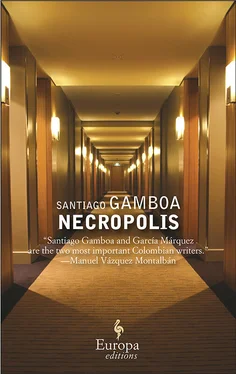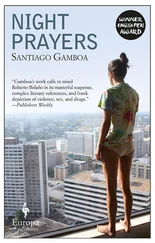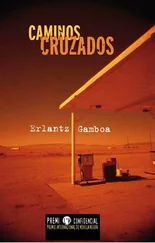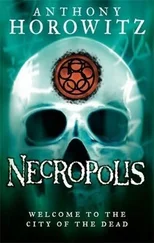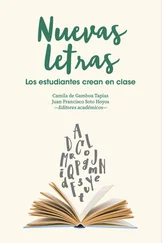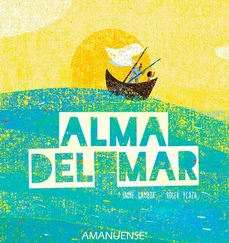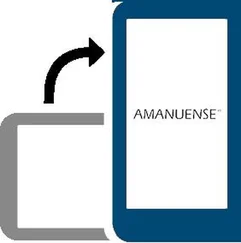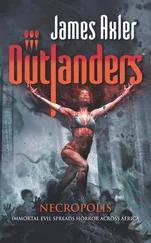The debate was being chaired by Professor Emma Olivier Dickinson of Cornell University, and the first question she threw out was, “Can we get to the bottom of a life through the word?” As Professor Elsa Goudinho replied, skillfully improvising, I looked around the hall, which was quite full in spite of the bombardment. I saw the publisher Lottmann in the fourth row and a little farther back the inseparable Kosztolányi and Supervielle, watching him, obsessed as they were — especially Supervielle — by the Tiberias publishing house; they were craning their necks in their desire to see what he was writing in his notebook, but as I was close to him it was obvious to me that he was drawing circles or sunsets or sailboats, not taking notes on anything connected with the words of Professor Goudinho. Farther back I saw Kaplan, who on seeing me looking at him raised his hand and waved.
I continued looking for a face that would tell me something concrete. A face that would say: I’m Walter, you found me, let’s have a talk after the event. Even after my conversation with Jessica, I still believed — at least that was what I wrote in my notes — that Walter could not have died in the shoot-out at the Ministry; to escape, he must have used a ploy similar to that used by the guerrillas of the Polisario Front, which consisted in burying yourself alive in the sand with a straw sticking out just above the surface to breathe through, and in that way tricking the enemy. Then Walter must have gone looking for José and Miss Jessica in order to recover his money and move to another country, clandestinely, to begin a new life, but for some reason José must have betrayed him, taking part — or all — of those funds; all this was possible, and I was hoping that it was, because, to tell the truth, my mind was already on what I was going to write about José Maturana, and that seemed like the most convincing and dramatic ending.
After reading the letter to Egiswanda, I had completely ruled out the idea of a murder, but I kept thinking about the unknown person in Room 1209. The guest was a man and had some kind of relationship with Jessica, but I did not know who he was or, rather, I had been unable to confirm whether or not he was Walter under a new identity. The idea that he might simply be a lover of Jessica’s, without anything to do with the story, refused to lodge in my brain. As I thought about this, I realized that Jessica and Egiswanda had very similar voices: a slightly accented Spanish, an underlying sense of nervousness, which of the two had been the woman waging that terrible battle of love the first night? The voice was the same, but whose voice was it?
I was still scrutinizing the audience, row by row, when the door at the top opened and a slim female figure entered the room. The light was dim but I recognized her immediately: it was Jessica. She was alone and I assumed she would look for her companion and sit down beside him, but that did not happen. She simply looked for a free seat at the back of the hall. As she sat down I noted something incredible: the person beside her was none other than Egiswanda. The two women had never met, and Jessica could not possibly know that Egiswanda even existed. It was strange. There they were, sitting side by side, not knowing how much they had in common. They were linked to one another by men who were now dead, and I, who had not even lived through those events, was the only person who could have revealed that fact to them. I vowed to do so after my talk. Each woman had a piece of José; their descriptions and experiences revealed different, contrasting men.
Sabina Vedovelli and her husband were not in the hall, but it was well known that they did not attend events, not for the reason that might have been imagined, a lack of interest in anyone’s activities but their own, but in order to avoid becoming the center of attention and stealing someone else’s show. This was what Sabina had said at the cocktail party when she was asked why she had not attended other talks. She said that she followed them through the hotel’s closed circuit, and she demonstrated, by quoting accurately from them, that this was indeed the case.
After Elsa Goudinho’s contribution, the chair asked Rashid to speak. I put aside my reflections and got ready to listen to him. Rashid cleared his throat, took a sip of water, thanked the chairperson for her words of introduction and the organizers of the ICBM, and said: allow me to tell you a story, which is after all what we are here for. My story is this:
I have come to tell you about an old Palestinian who once traveled throughout this region as a driver of trucks and buses. His name is Jamil Abu Eisheh, he is eighty-two years old and was born in the city of Hebron, on the West Bank. But let us take things one at a time. Hebron is the most densely populated Arab city in Palestine and of course the capital of the West Bank. Hebron is a white city extending over a number of hills, whose center is the mosque, built over the tomb of the patriarch Abraham, worshiped by both religions. We Arabs call him Ibrahim, but he is the same man as the Abraham of the Jewish tradition, the father of Isaac and Ishmael.
It was there that Jamil Abu Eisheh was born, in 1923, when the West Bank was known as Transjordan, and the whole of Palestine was part of the British Mandate. Jamil still has his British identity papers and his British driving license, which he had when he started working as a driver, like his father, who owned a bus that did the route from Hebron to Jerusalem. But those were other times. Today, sitting in his house on Ein Sara Street, Jamil has talked to me many times about his childhood. “Our neighbor in the old city of Hebron was a Jewish woman. When my mother had to go out, she would leave us in this woman’s house and if it was for a long time the neighbor would breastfeed her son and then my little brother.” That was what life was like between Jews and Arabs in those days. It was the British who created the problems, the old man says, when they gave the power and the government buildings to the Jews. They set the two sides against each other and then just left.
Jamil remembers his journeys by truck. He has thousands of stories. For example, when he traveled alone along the edge of the Red Sea to get to Jedda, in Saudi Arabia. Six hundred miles without roads through the desert, praying to Allah that the engine of his truck would hold out and he would not have to abandon it in some solitary place through which other truck drivers rarely passed. He finally reached Jedda, the city of the white towers, and then, after another forty-five miles, Mecca, the holy city of Islam, the pilgrimage to which he has done seven times, which gives him the title of “Hadji,” and that’s why, whenever he talks about Mecca and remembers his pilgrimage, the old man gets down on his knees and touches the floor with his forehead. What’s Mecca like? I asked him once, and he replied: there’s nothing like it in the world, it’s the holy city, it’s the center of the universe, it’s the first and last city, it’s a prayer made of tile, white walls, and towers. Jamil knows all the distances in the Middle East in miles, which is something that everyone has forgotten now, because of the borders and the barbed wire fences. Today most of the roads are either closed or can only be driven along if you have a safe conduct. “From Jerusalem to Amman is seventy miles,” he says. “From Amman to Daria, on the border with Syria, another seventy, and from Daria to Damascus, seventy.” At this point he opens his eyes wide and exclaims: “And from Damascus to Beirut, another seventy!” If the region were at peace a person could have breakfast in Jerusalem, lunch in Damascus, and dinner in Beirut.
Читать дальше
